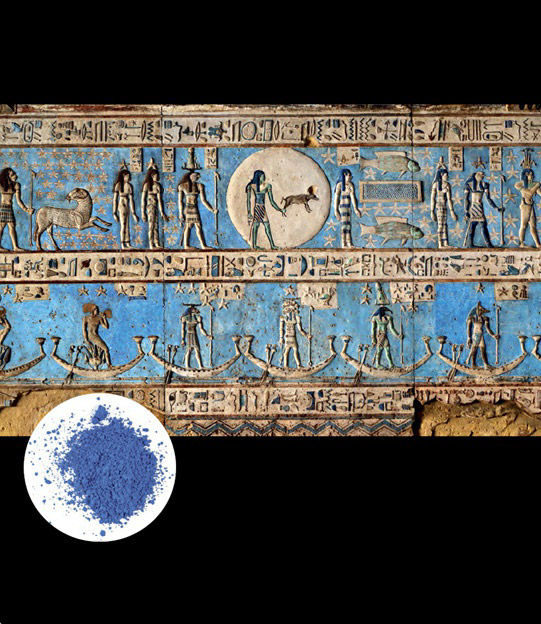Synthetic pigments have been a game-changer in the realm of art and materials science, with their roots going back to ancient times. One of the earliest examples is Egyptian Blue, a vibrant blue pigment developed over 5,000 years ago. This pigment was produced by mixing sand (silica), limestone (carbonate), copper, and potash, and then heating the mixture to a high temperature. The result was a powder with a striking blue hue, reminiscent of precious stones like turquoise and lapis lazuli.
In ancient Egypt, Egyptian Blue held great value, particularly among the elite. It was extensively used for decorative purposes in tombs, coffins, and various art objects, signifying its importance in the culture. The Egyptians also developed other synthetic materials such as faience, a blue-green glassy substance, commonly used in jewelry and amulets.
The knowledge and use of synthetic pigments were not confined to Egypt alone. Similar practices were observed in other Mediterranean and Asian societies. However, it remains a subject of debate among archaeologists whether these societies independently discovered the techniques or imported them from Egypt.
The advent of synthetic pigments like Egyptian Blue reflects a profound understanding of chemistry and materials science in the Bronze Age. These advancements laid the groundwork for future developments in synthetic glass production and eventually paved the way for the modern synthetic materials and glass industries, which are now integral to technological progress and innovation.

